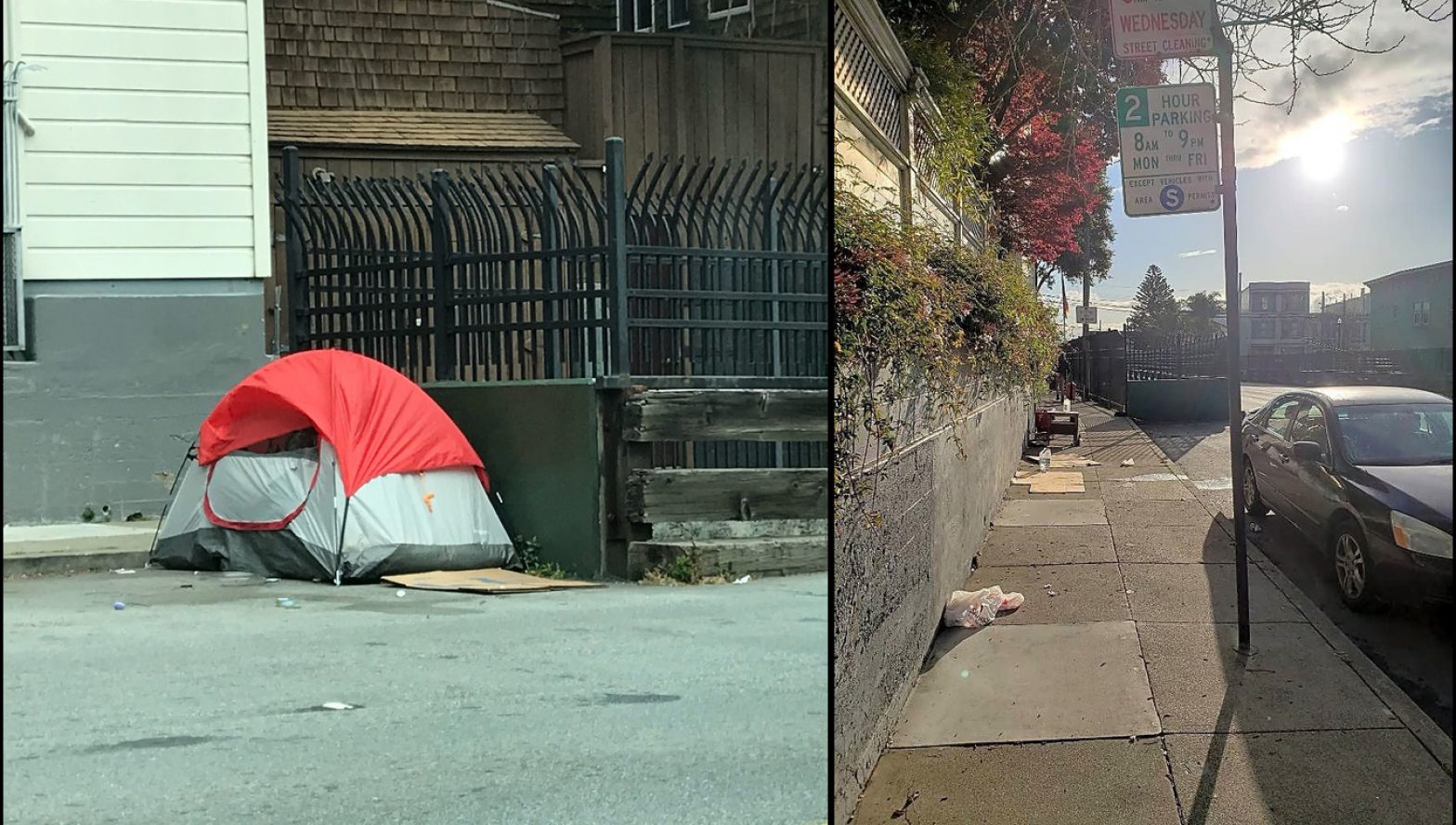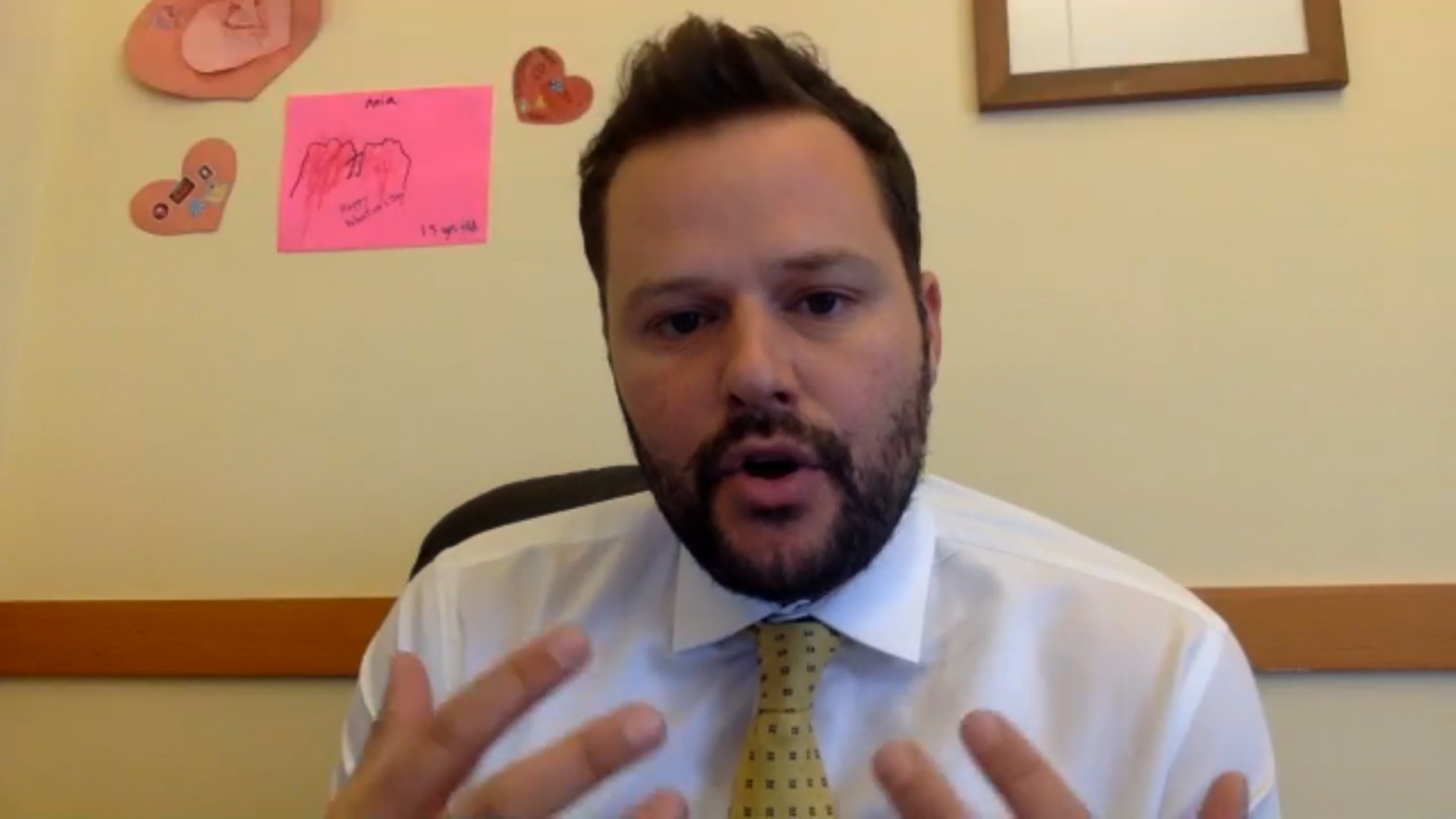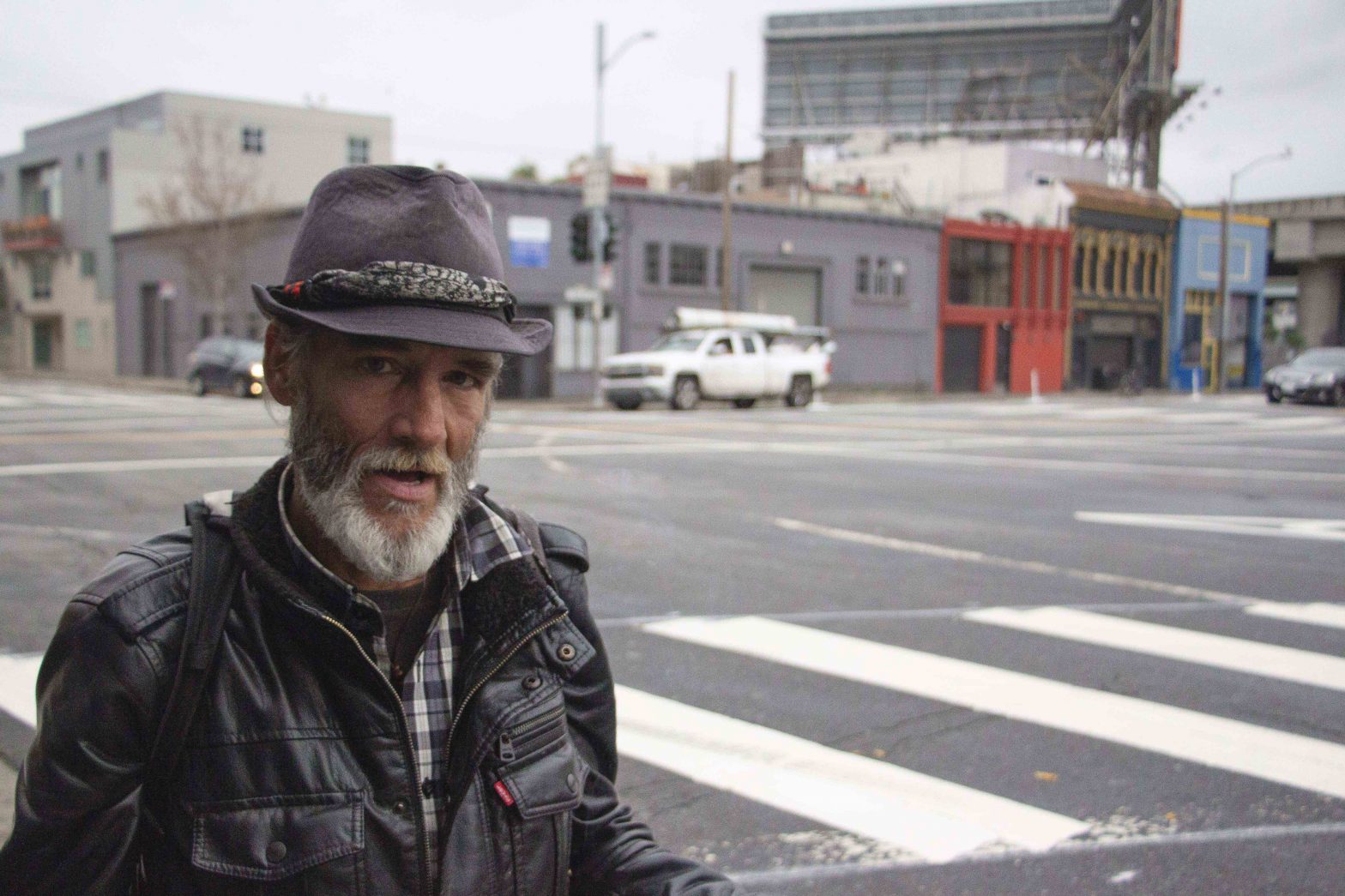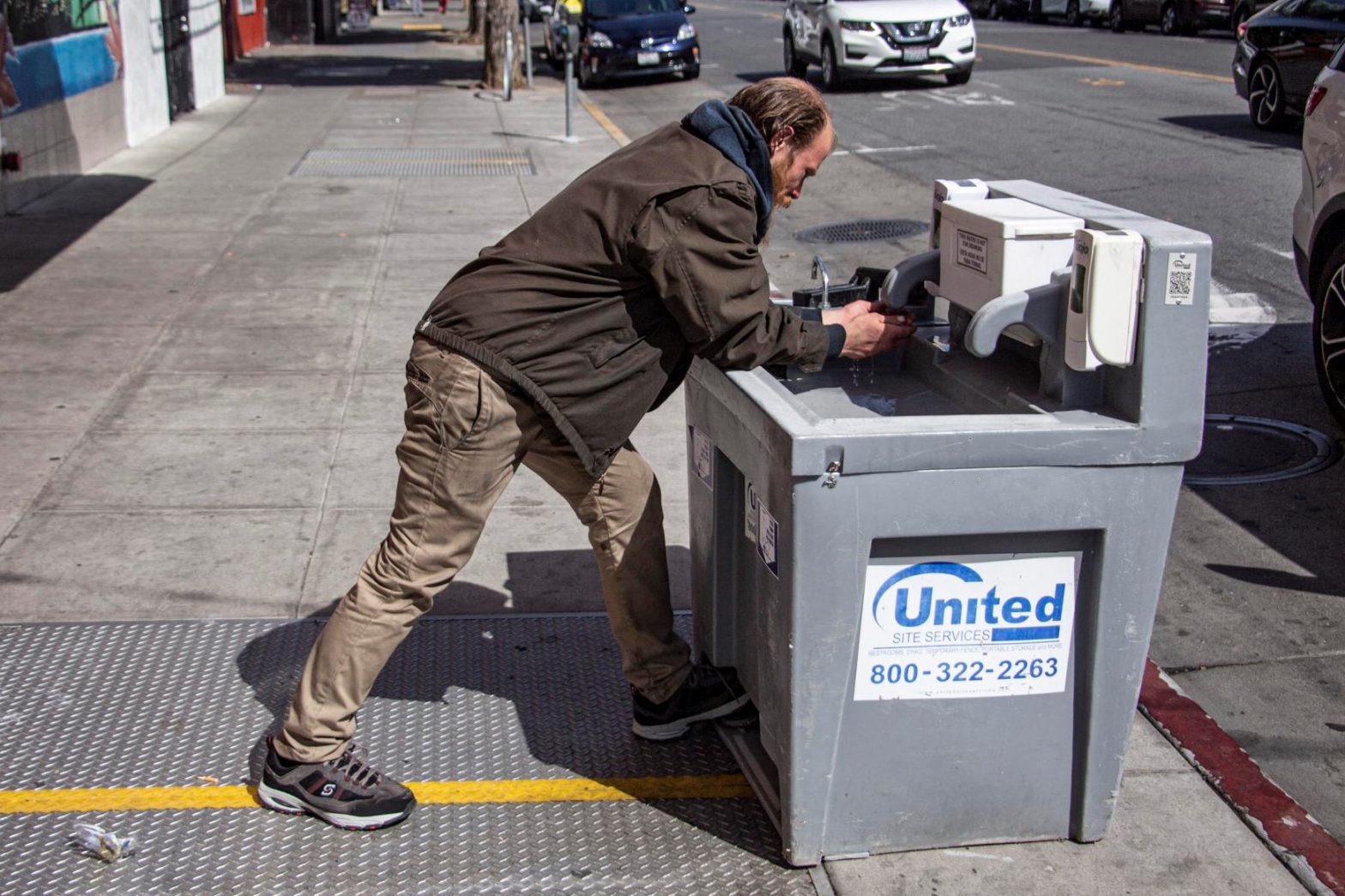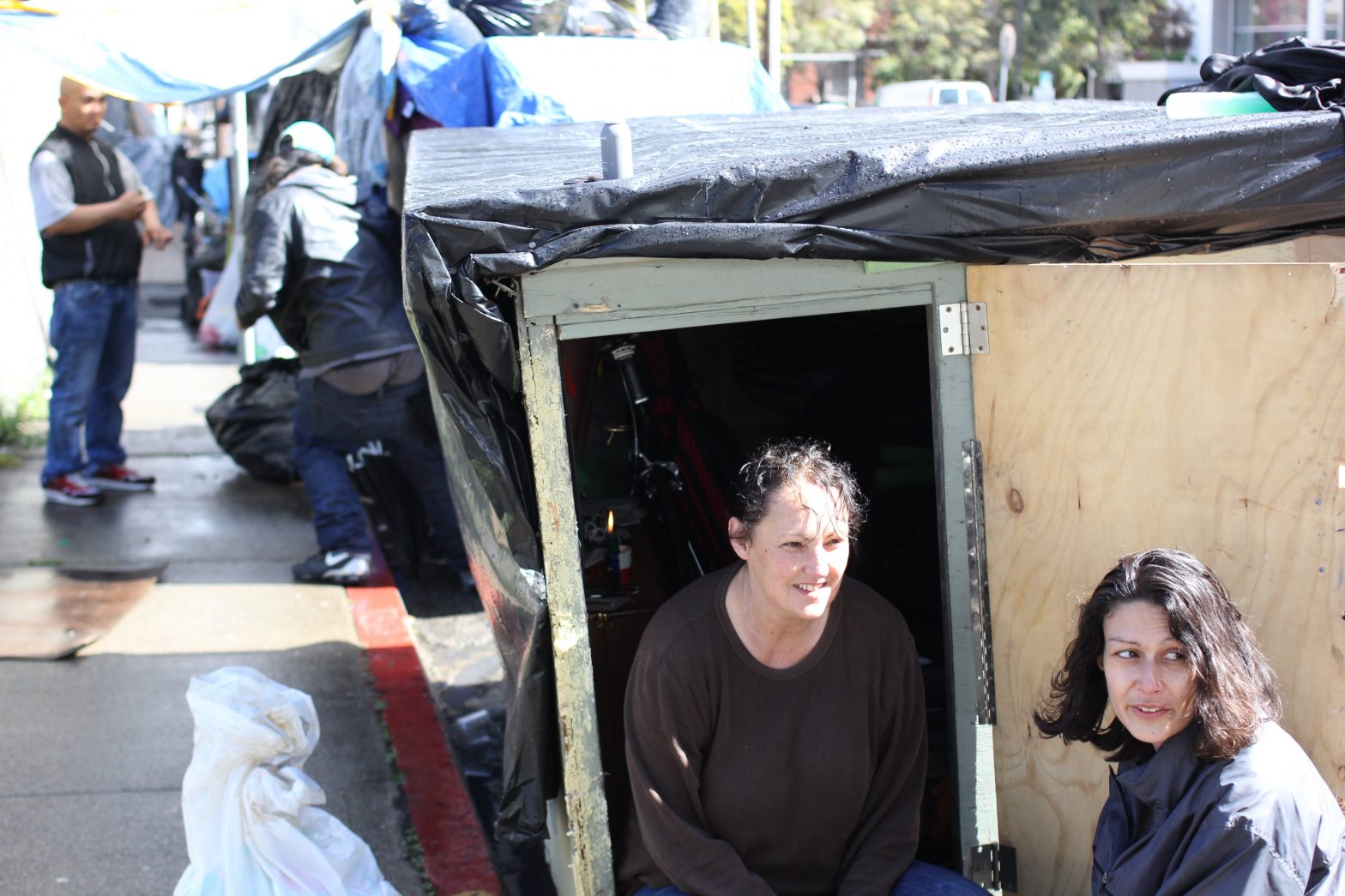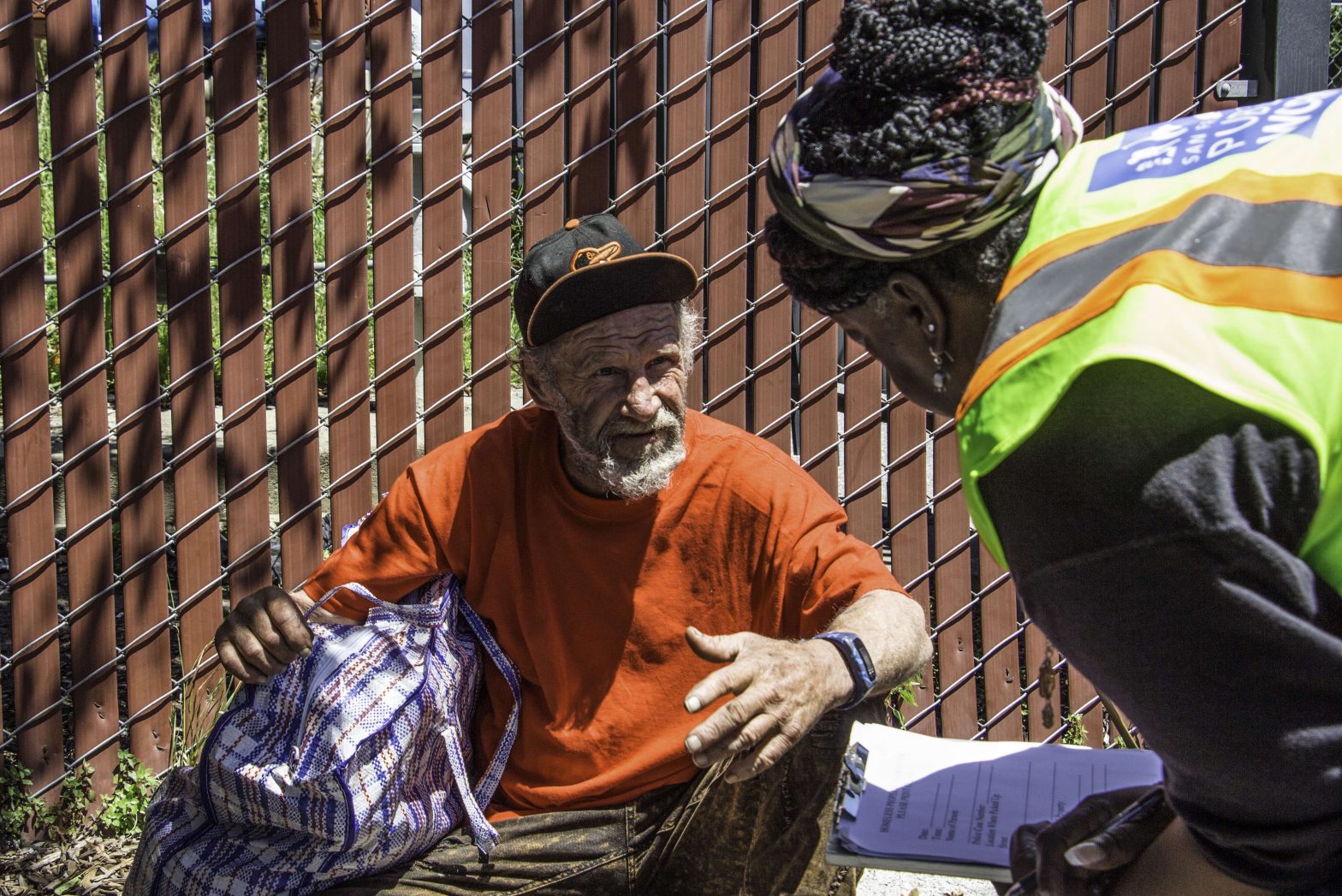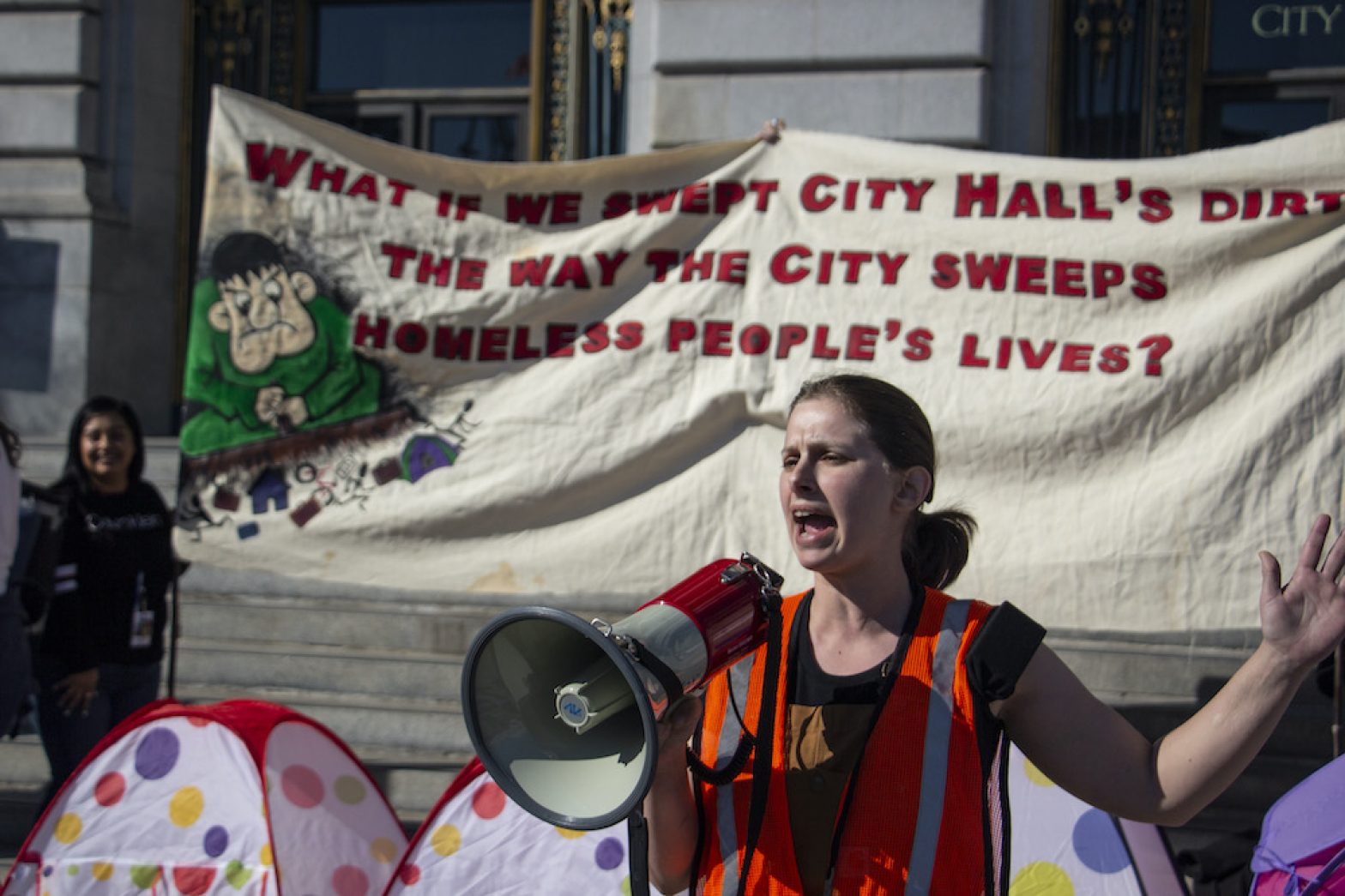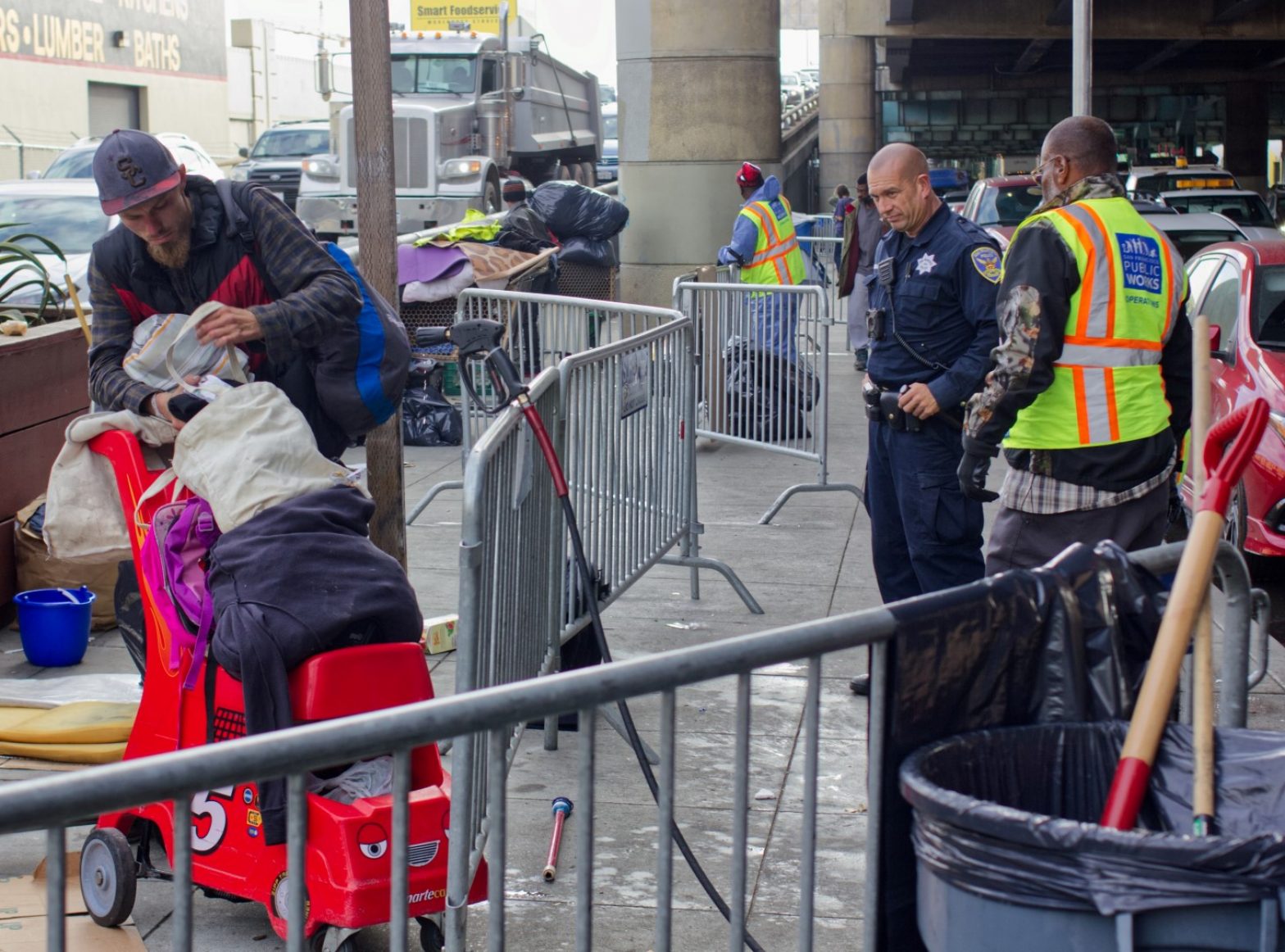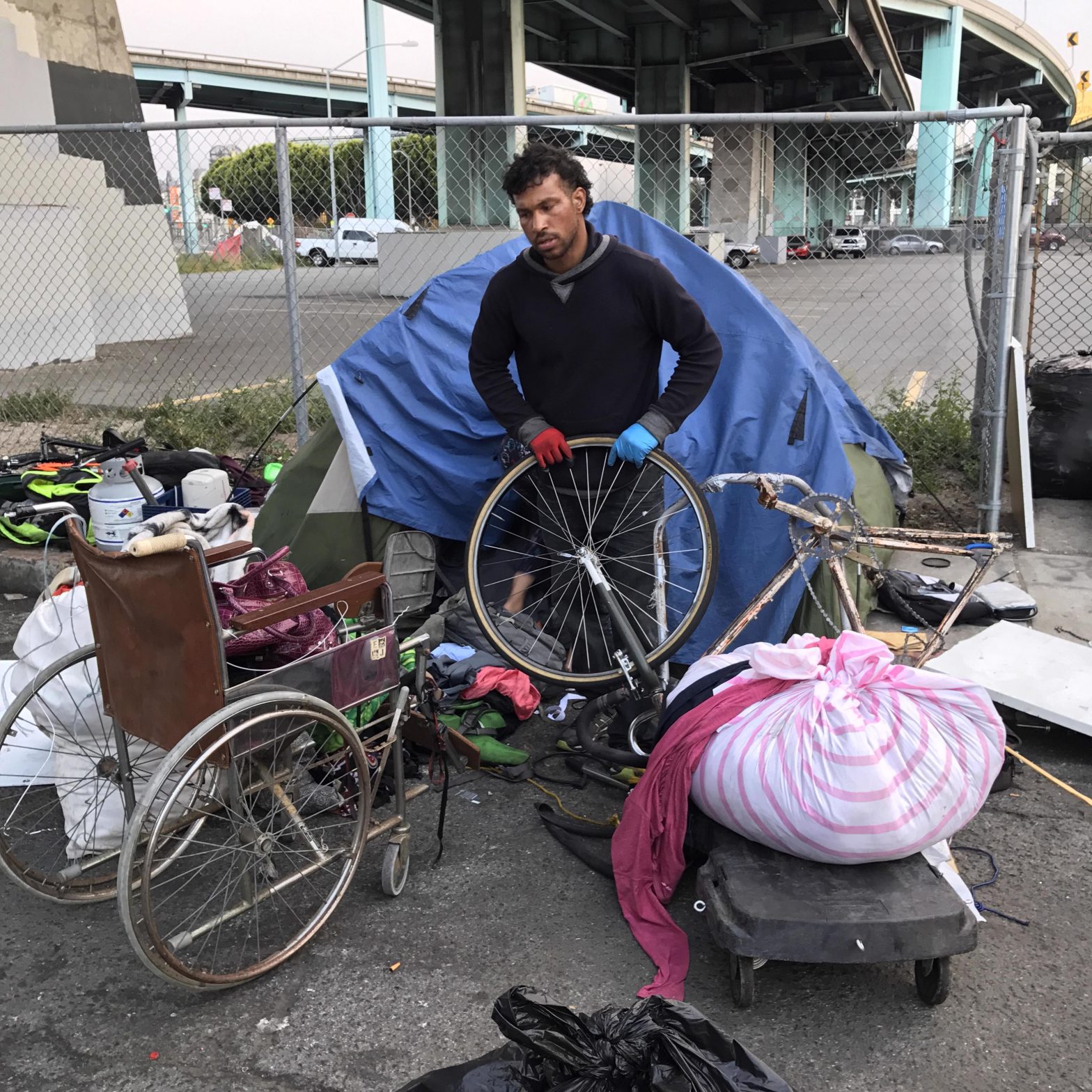Homelessness
S.F. Still Taking Tents From Homeless People During Deadly Pandemic
Normal
0
false
false
false
EN-US
X-NONE
X-NONE
/* Style Definitions */
table.MsoNormalTable
{mso-style-name:”Table Normal”;
mso-tstyle-rowband-size:0;
mso-tstyle-colband-size:0;
mso-style-noshow:yes;
mso-style-priority:99;
mso-style-parent:””;
mso-padding-alt:0in 5.4pt 0in 5.4pt;
mso-para-margin-top:0in;
mso-para-margin-right:0in;
mso-para-margin-bottom:10.0pt;
mso-para-margin-left:0in;
text-indent:.5in;
line-height:150%;
mso-pagination:widow-orphan;
font-size:12.0pt;
font-family:”Times New Roman”,serif;}
Despite assurances from officials that the practice would stop, city workers continue to confiscate homeless people’s tents and remove encampments as the coronavirus spreads across a shuttered San Francisco.
